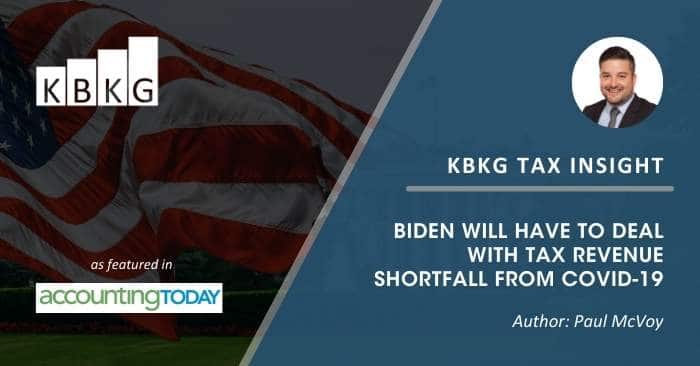As featured in Accounting Today
When Joe Biden was inaugurated last month, he assumed all the responsibilities of the American presidency, including tax policy decisions. With the advantage of a Democratic majority in both houses of Congress, his administration will probably pursue tax policy options to raise revenues to offset the deficit attributable to the COVID-19 pandemic. One option likely to be implemented is an increase in tax enforcement.
The Internal Revenue Service examines returns to ensure that reported taxes are correct. Returns may be selected for review through various methods, including computer scoring, information matching and revenue levels, among others. An unfortunate company chosen for examination will want to ensure each position in its tax filing is fully substantiated, especially those regarding claimed credits. One such credit available to taxpayers, the Credit for Increasing Research Activities, also known as the R&D credit or research credit, has been subject to tax controversy since it was enacted decades ago.
The research credit is a permanent incentive that provides taxpayers operating across all industries the opportunity to reduce their tax burden through the performance of qualifying research activities. For an activity to qualify for the research credit, it must meet all the requirements described in Section 41(d). Section 41(d) defines “qualified research” as expenditures that may be treated as expenses under Section 174. Such research must be undertaken for the purpose of discovering information that is technological in nature and the application is intended for the development of a new or improved business component of the taxpayer. Substantially all of those activities must constitute the elements of a process of experimentation.
Calculating and documenting the R&D credit is an intricate and often burdensome undertaking. Substantiation and documentation of the R&D credit has long been an area of controversy for taxpayers and exam teams. Recently, the IRS issued guidance to assist revenue agents in the examination of research credits. However, this guidance could be construed as an effort to streamline the audit process with an expectation that increased enforcement would generate greater collections to cover the shortfall in tax revenues attributable to the current pandemic.
The Treasury Inspector General for Tax Administration issued a report in Dec. 2018 on IRS efforts to ensure qualified small businesses claiming the research credit to apply against the employer portion of Social Security tax were doing so properly. After a review of 1467 businesses, the report found the IRS did not have an appropriate process to identify whether small businesses claiming the payroll offset were eligible for the benefit. In response to a recommendation from TIGTA, IRS management stated they will be working to develop post-processing compliance initiatives to ensure eligibility requirements are met.
IRS launches research campaign
The IRS launched a research issues campaign in Feb. 2020 with the objective of promoting voluntary compliance, focusing resources on the highest-risk research issues and increasing the consistency of examinations related to the Section 41 R&D credit and Section 174 research and experimental expenditures. The IRS expected to employ various methods, including form updates, issue-based examinations and additional guidance as the campaign evolved.
The IRS’s Large Businesses and International division issued a directive in March 2020 communicating the requirements and process for a centralized risk review for cases with research issues related to Section 41 and Section 174. National Risk Review Teams have been established, consisting of subject matter experts, engineers, revenue agents and other specialists, to coordinate and perform comprehensive risk analyses intended to increase examination efficiency through the identification of high-risk returns. The theory behind the national effort is that a centralized approach will provide proper scope and depth for examinations and yield greater consistency in determinations.
With the new administration enjoying majorities in both houses of Congress, the spotlight will shine on policies to deal with the shortfall in tax revenues caused by the COVID-19 pandemic. IRS enforcement efforts are anticipated to increase to ensure tax compliance. The research credit has been an impetus for innovation for companies since its inception. However, the burden of proof still lies with the taxpayer claiming deductions or credits. Companies claiming R&D credits should review the historical guidance provided by the IRS and ensure the credits claimed can be properly substantiated in the event of any future controversy.
Author: Paul McVoy
About the Author
 Paul McVoy – Principal
Paul McVoy – Principal
New York
Paul McVoy is a Principal for KBKG’s R&D Tax Credit Consulting practice, overseeing the practice form our New York office. In this role, Paul devotes his time to consulting companies in maximizing their R&D tax credit claims. Prior to joining KBKG, Paul was a manager at a Big Four accounting firm out of the Philadelphia, San Diego, and Los Angeles offices. » Full Bio


